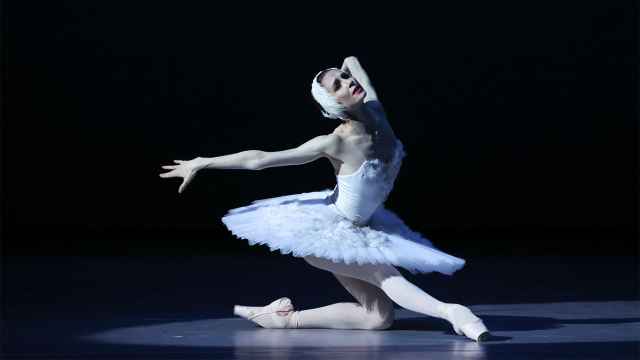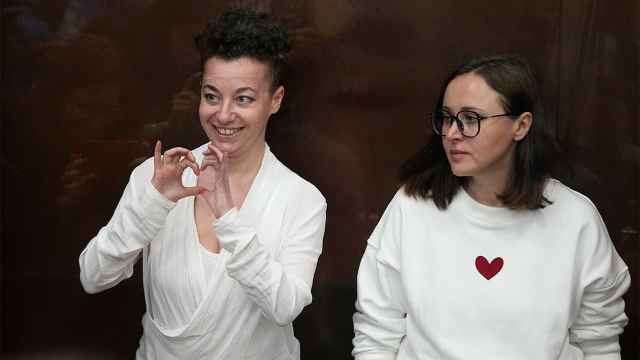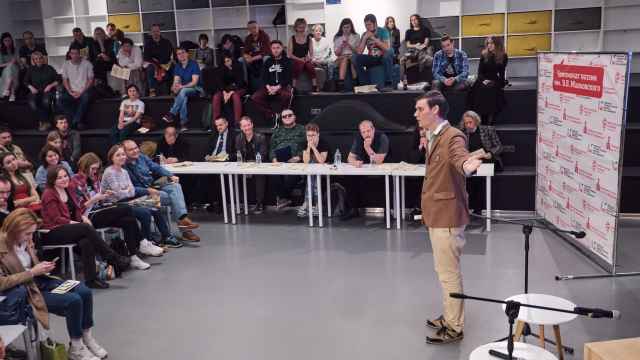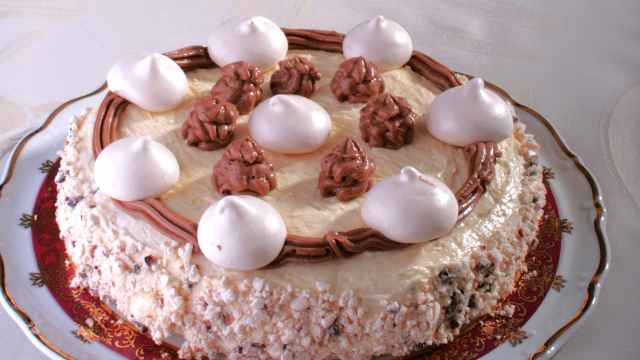St. Petersburg — As Orthodox Easter grows nearer, an exhibit will open Friday at the Peter and Paul Fortress that aims to educate visitors on the checkered history of Easter celebrations in St. Petersburg from the 19th through the 21st centuries.
About 500 items, including graphics, cards, photos, billboards, books and applied art will tell visitors about Easter church services, traditional Easter gifts, meals, folk festivals held during the holiday, anti-religious Soviet propaganda and modern Easter celebrations.
Orthodox Easter, one of the main Christian holidays, falls on April 15 this year, after the seven-week period of Lent. Catholic Easter this year falls on April 8.
In 19th- and early 20th-century St. Petersburg, Holy Week — the last week before Easter — traditionally began with the arrival of pussy-willow markets where people could also buy other goods in preparation for the celebration such as Easter gifts, cards, toys, decorations, fabric and paper flowers. The exhibit at the Peter and Paul Fortress will feature pictures and engravings of traditional St. Petersburg pussy-willow markets near Gostiny Dvor and on Sennaya Ploshchad.
During the last days of Lent, believers traditionally buy items for their Easter celebration and meal including: painted eggs, kulich (a sweet Easter bread) and paskha (a cottage cheese dessert). Easter sets from the 1910s explaining how to make kulich, paskha and color eggs will also be on display.
Easter celebrations begin Saturday night with a late-night Easter church service. Pictures at the exhibit capture moments such as the Procession of the Cross and the blessing of the Easter bread and eggs. Priests’ ceremonial Easter robes dating back to the early 19th century can also be seen.
On Easter Sunday, Orthodox believers visit relatives and friends. During these visits they give each other gifts, the most popular of which are eggs and cards.
The exhibit boasts a rich collection of Easter cards decorated with holiday symbols such as priests, angels, churches, kulich, painted eggs, pussy willow, rabbits and chicks. There will also be about 120 Easter eggs on display made of porcelain, glass, wood, metal, stone and beads from the 19th and early 20th centuries.
After Lent was over, public festivals were again allowed in the city. These activities are reflected in engravings and photos of celebrations on the city’s Field of Mars and Alexandrovsky Sad. There are also posters of festival balls and performances from pre-revolutionary times.
A separate section of the exhibit is dedicated to the story of Easter celebrations after 1917. During the first years of Soviet power in St. Petersburg, then called Petrograd, people continued to celebrate Easter, as shown in pictures from the 1920s. In the 1930s, however, Easter and other religious holidays were banned. This is reflected in anti-Easter posters with captions such as, “No Absentees [from work] on Easter Day.”
However, in some churches, Easter services continued to be held. In a photograph taken in 1943, during the Siege of Leningrad, city residents are attending an Easter service at the Spaso-Preobrazhensky Cathedral.





